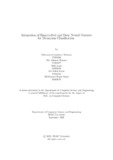| dc.contributor.advisor | Alam, Md. Ashraful | |
| dc.contributor.advisor | Reza, Md. Tanzim | |
| dc.contributor.author | Rahman, Mohammad Saminoor | |
| dc.contributor.author | Hossain, Md. Jubayer | |
| dc.contributor.author | Islam, Siful | |
| dc.contributor.author | Kabir, Md. Nafiul | |
| dc.contributor.author | Sujon, Md. Kamrul Hasan | |
| dc.date.accessioned | 2022-06-06T05:04:19Z | |
| dc.date.available | 2022-06-06T05:04:19Z | |
| dc.date.copyright | 2021 | |
| dc.date.issued | 2021-09 | |
| dc.identifier.other | ID 17201136 | |
| dc.identifier.other | ID 17301177 | |
| dc.identifier.other | ID 16201050 | |
| dc.identifier.other | ID 17101256 | |
| dc.identifier.other | ID 16201070 | |
| dc.identifier.uri | http://hdl.handle.net/10361/16905 | |
| dc.description | This thesis is submitted in partial fulfillment of the requirements for the degree of Bachelor of Science in Computer Science and Engineering, 2021. | en_US |
| dc.description | Cataloged from PDF version of thesis. | |
| dc.description | Includes bibliographical references (pages 44-46). | |
| dc.description.abstract | Deep neural networks (DNNs) are widely utilized to automate medical image in-
terpretation in many forms of cancer diagnosis and to support medical specialists
with fast data processing. Although man-made characteristics have been used to
diagnose since the 1990s, DNN is fairly new in this eld and has shown extremely
promising results. The fundamental goal of this study is to detect melanoma cancer
in its early stages by obtaining a remarkable outcome with greater accuracy. Our
purpose is to address the problem of an increase in skin cancer patients throughout
the world, as well as an exponential increase in the danger of mortality from not
commencing the diagnosis at an early stage, as a result of late detection. We propose
that the research works on handcrafted features and merges the result with deep
learning approaches with the initial help with a huge dataset of raw images. The
DNN model used in this research has multiple layers with various e ective lter-
ing processes called batch normalization and dropout also with added layers named
atten and dense. In this process, images are classi ed to predict melanoma cancer
at an early stage with Mean Shift, SIFT, and Gabor separately then the output
was ensembled with later added Raw images results to give better accuracy. With
an early integration model for separate featured databases and with a late and full
integration model for ensemble with various results from the early integrated model
we got our results. As a result, this neural network has provided an accuracy of 90%
in early models and in late and full integration 86% and 84% respectfully, which is
higher than other conventional approaches. | en_US |
| dc.description.statementofresponsibility | Mohammad Saminoor Rahman | |
| dc.description.statementofresponsibility | Md. Jubayer Hossain | |
| dc.description.statementofresponsibility | Siful Islam | |
| dc.description.statementofresponsibility | Md. Nafiul Kabir | |
| dc.description.statementofresponsibility | Md.Kamrul Hasan Sujon | |
| dc.format.extent | 46 pages | |
| dc.language.iso | en | en_US |
| dc.publisher | Brac University | en_US |
| dc.rights | Brac University theses are protected by copyright. They may be viewed from this source for any purpose, but reproduction or distribution in any format is prohibited without written permission. | |
| dc.subject | Skin cancer | en_US |
| dc.subject | DNN | en_US |
| dc.subject | Handcrafted feature | en_US |
| dc.subject | Melanoma | en_US |
| dc.subject | Ensemble | en_US |
| dc.subject | Image segmentation | en_US |
| dc.subject | Confusion Matrix | en_US |
| dc.subject.lcsh | Neural networks (Computer science) | |
| dc.subject.lcsh | Signal processing -- Digital techniques -- Computer programs. | |
| dc.title | Integration of handcrafted and deep neural features for Melanoma classification | en_US |
| dc.type | Thesis | en_US |
| dc.contributor.department | Department of Computer Science and Engineering, Brac University | |
| dc.description.degree | B. Computer Science | |

